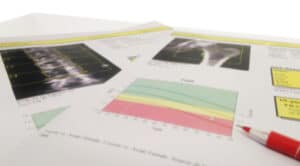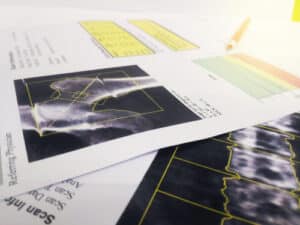Did you know that up to 90% of bone density (DXA) exams have errors?(1) In fact, these scans are so fraught with errors that interpretation by a radiologist can lead to misdiagnosis, and, even worse, inappropriate therapy, 40% of the time!(2) This is why I always like to see the full 3 to 5 page DXA printout from the machine…not just the radiologist’s one or two page report. This is also why I like to see clear copies of DXA printouts, and NOT a less than optimal copy or (heaven forbid) an emailed or faxed scan.

A dual-energy X-ray absorptiometry (DXA) scan is the gold standard for evaluating and quantifying a patient’s bone mineral density (BMD). DXA scans are extremely important for evaluating skeletal health. They help us not only determine if a person has osteoporosis but also, with follow-up scans, determine if they are responding to therapy or not. But we can ONLY determine these things if the scan is of good QUALITY. A poor quality scan is worse than no scan at all.

When performing a scan, the technologist must first position the patient properly, then follow a strict protocol of delineating and measuring anatomical structures to be evaluated. Improper patient positioning, or inexperience or carelessness when performing the actual scan leads to imprecise, inaccurate measurements. This can then lead to incorrect interpretation by a radiologist (yes, sometimes they are too rushed to catch DXA errors or not experienced enough to see them).
A DXA printout includes the following important information:
- Patient information (ex: height, weight, etc.)
- The manufacturer of the DXA machine (They all produce X-ray beams differently, analyze and delineate scanning areas differently, and use different calibration techniques and algorithms to measure BMD.)
- Thumbnail pictures, with delineated regions of interest (ROI) (hip, lumbar spine, or forearm)
- Indicators of the scan’s precision and accuracy that help in determining the least significant change (LSC) (When evaluating DXA exams, LSC is defined as the least amount of bone density change that can be considered statistically significant with 95% confidence.)
- The actual bone mineral density in grams per centimeter squared (BMD g/c2) of each structure being evaluated
- T-score and Z-score of each structure
There is crucial information in those 3 to 5 pages and the ONLY way to determine if the scan was done properly and provides precise, accurate information, is to look at the full DXA printout (or a good clear copy) and determine if it is a quality exam.
- Messina, et al. Eur Radiol (2015) 25:1504-1511
- Lewiecki, E.M., et al. J Clin Densitom (2006) 9:388-392

